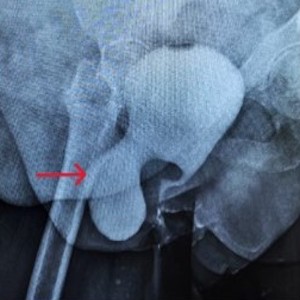Case reports
Vol. 37 (2025)
Unraveling the complexities: stress urinary incontinence, pubic diastasis with bladder herniation and pelvic organ prolapse following obstructed labor of macrosomic stillborn

Publisher's note
All claims expressed in this article are solely those of the authors and do not necessarily represent those of their affiliated organizations, or those of the publisher, the editors and the reviewers. Any product that may be evaluated in this article or claim that may be made by its manufacturer is not guaranteed or endorsed by the publisher.
All claims expressed in this article are solely those of the authors and do not necessarily represent those of their affiliated organizations, or those of the publisher, the editors and the reviewers. Any product that may be evaluated in this article or claim that may be made by its manufacturer is not guaranteed or endorsed by the publisher.
Published: 8 October 2025
74
Views
23
Downloads







